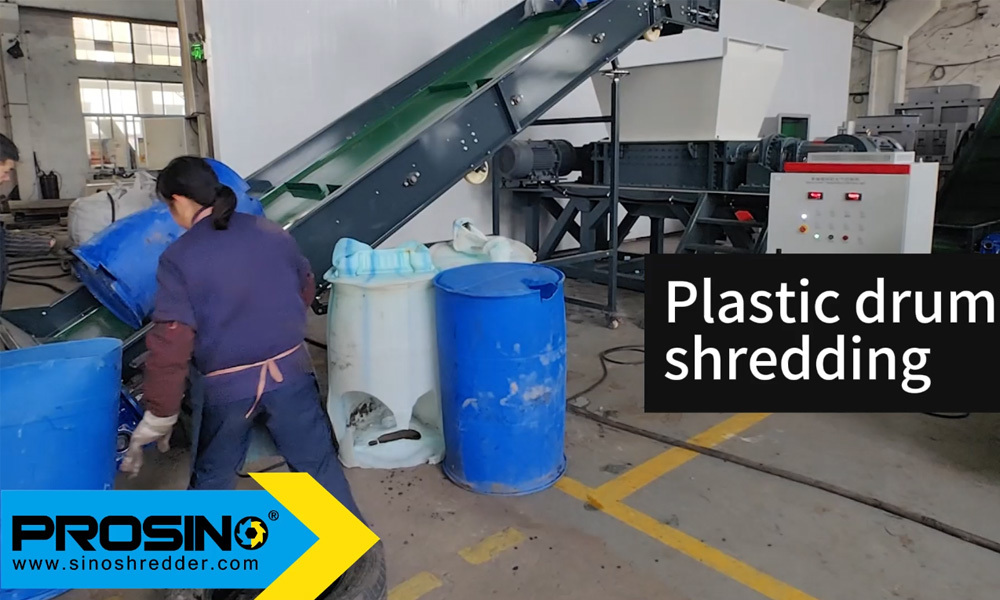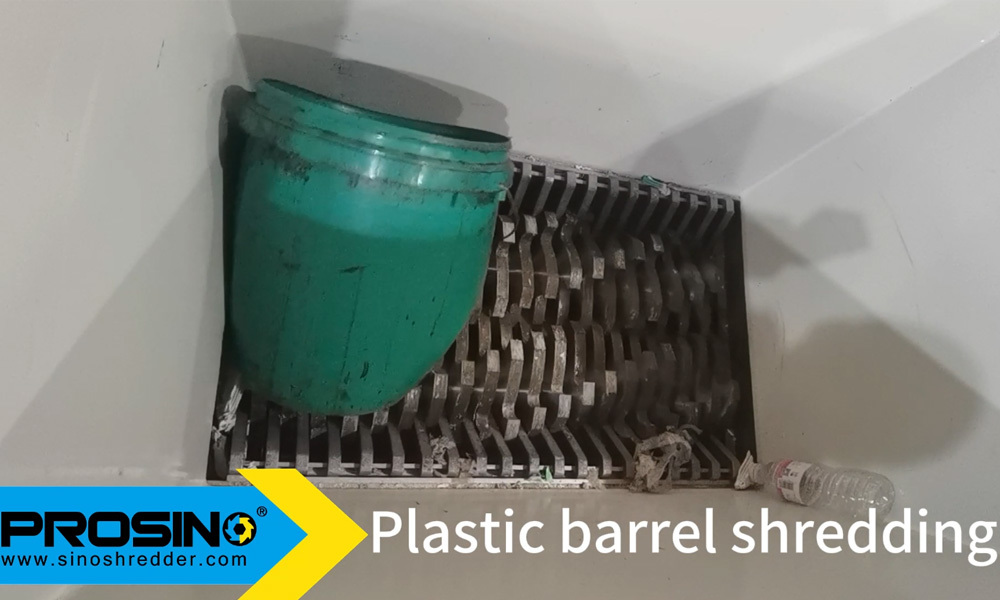A dustbin shredder is an industrial-grade machine designed to shred or crush large plastic waste containers—such as bins, buckets, and barrels—into smaller, manageable pieces for recycling or disposal. In many systems, shredders are used in combination with granulators to achieve finer output suitable for pelletizing or remanufacturing.
Types & Configurations
1. Double-Shaft Twin-Claw Shredders
- Mechanism: Two counter-rotating shafts with interlocking blades that tear through tough plastic.
- Ideal For: Thick-walled objects like rigid bins, drums, and IBCs.
2. Single-Shaft Forced-Feed Shredders
- How They Work: A ram pushes material against a rotating cutter shaft.
- Best For: Medium-hard plastics, smaller bins, or centralized shredding.
3. Granulators (Secondary Size Reducers)
- Role: Often used after shredding to reduce material to fine flakes or pellets.
- Design: Fast-rotating blades and screens determine final particle size (typically 4–12 mm).
- Best For: Achieving uniform output for plastic reprocessing, compounding, or injection molding.
- Note: While granulators are not usually the primary tool for shredding entire bins, they are essential for refining output from shredders.
Key Applications
Dustbin shredders are commonly used in:
- Recycling facilities and municipal waste management
- Industrial plants handling large plastic waste containers
- Pre-processing for chemical recycling and volume reduction
- Sorting and disposing of bulky plastics from events or institutions
Benefits & Advantages
- Volume Reduction: Dramatically decreases waste volume—making storage and transport more economical.
- Enhanced Recycling: Prepares plastic bins and drums for efficient downstream recycling.
- Versatility: Handles various rigid plastics, including buckets, oil drums, crates, and IBCs.
- Automation & Throughput: High-capacity models can process multiple tons per hour with minimal supervision.
Real‑World Use Cases
- Municipal Waste Sites: Shredding bins before landfill disposal reduces space and prepares material for recycling.
- Recycling Centers: Pre-process large containers into manageable pieces for plastic regrinders.
- Industrial Facilities: Depots shred outdated IBCs, drums, and buckets onsite for efficient recycling or disposal.
Installation & Operation Tips
- Choose Based on Material Type: Identify what you need to shred most frequently—e.g. thick drums vs. thinner plastic bins.
- Plan Motor Capacity & Blade Configuration: Size motors and blade count per material hardness and throughput requirements.
- Install PLC Safety Controls: Overload detection, reverse functions, and automatic stop features safeguard the machine.
- Provide Regular Maintenance: Lubricate moving parts, monitor blade wear, and schedule blade sharpening/replacement regularly.
Let us know your expected throughput, bin types, and material hardness. We will be happy to help narrow down options or even outline selection criteria.
Quick links:
PROSINO plastic drums shredders


















